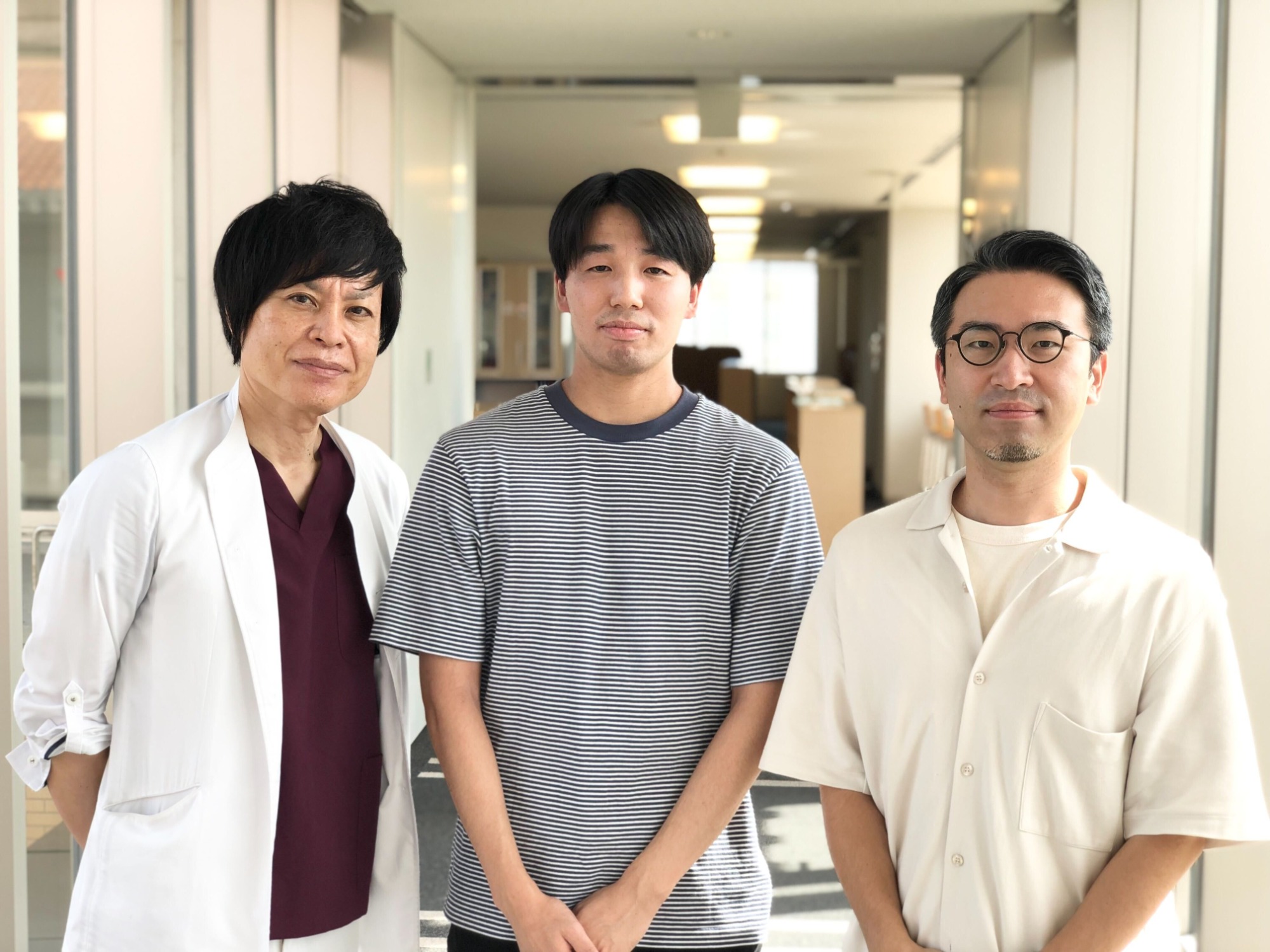Achievements
A research group including graduate students from the Graduate School of Medical Sciences has discovered that blood creatinine concentration is a useful indicator for screening for sarcopenia in hemodialysis patients.
A research group including Daisuke Kakida, a second-year master's student at the Graduate School of Medical Sciences, his supervisor Professor Tamaki, and Lecturer Matsuzawa demonstrated that blood creatinine concentration is a useful indicator for screening for sarcopenia in hemodialysis patients, and their paper was published in the 2021 issue of the Journal of Cachexia, Sarcopenia and Muscle.

From left: Professor Tamaki, Mr. Kakita, and Lecturer Matsuzawa
Topic
Simplified discriminant parameters for sarcopenia among patients undergoing haemodialysis
Author of the paper
Daisuke Kakita, Ryota Matsuzawa, Akira Tamaki et al.
Research Summary
A research group including Daisuke Kakida (2nd year master's student), lecturer Ryota Matsuzawa, and professor Akira Tamaki of the Department of Pathophysiology and Kinesiology (internal disorders) of the Graduate School of Medical Sciences Hyogo Medical University College of Medicine, has demonstrated that serum creatinine concentration, a metabolic product of muscle protein, is useful for screening for sarcopenia in hemodialysis patients. This research paper was published in the Journal of Cachexia, Sarcopenia and Muscle (2021 JOURNAL IMPACT FACTOR: 12.063).
Research Background
In Japan, the number of patients with end-stage renal failure who require hemodialysis is increasing year by year. Focusing on the aging rate of dialysis patients, the average age of the dialysis population in Japan at the end of 2018 was 68.7 years old, and 78.1% were 60 years old or older. In addition to aging, dialysis patients are known to have many risk factors for developing sarcopenia, such as chronic malnutrition, chronic inflammation, insulin resistance, metabolic acidosis, uremia, hypercatabolism/anabolic resistance, physical inactivity/lack of exercise habits, multiple diseases, aggravation of lifestyle-related diseases, amino acid loss associated with dialysis therapy, carnitine deficiency, and repeated hospitalization. Sarcopenia is a disease characterized by a progressive and systemic decrease in muscle mass and strength, and has become a serious therapeutic target in recent years.
In order to develop disease management aimed at preventing and correcting sarcopenia in the daily medical care of dialysis patients, it is important to develop a simple and reliable screening index for sarcopenia. Therefore, we decided to examine the usefulness of sarcopenia screening by focusing on the concentration of creatinine in the blood, which is a metabolic product of muscle protein.
Research Methods and Results
A cross-sectional study was conducted on 356 hemodialysis patients recruited from three facilities in Tokyo, Kanagawa, and Hyogo prefectures to examine the ability of the creatinine index, calculated from serum creatinine levels, to discriminate sarcopenia. Sarcopenia was identified in 142 (39.9%) of the study subjects. Receiver operating characteristic analysis showed that the area under the curve for the creatinine index in discriminating sarcopenia was 0.77, confirming that the index has moderate discriminatory ability. Furthermore, logistic regression analysis after adjustment for patient background factors revealed that the odds of sarcopenia increased 1.27 times for every 1 mg/kg/day decrease in the creatinine index (odds ratio, 1.27; 95% confidence interval, 1.06-1.53).
We have shown that the creatinine index, calculated from serum creatinine levels, is a useful sarcopenia screening indicator that is objective and easy to use in clinical settings.
Source of research funds etc.
JSPS KAKENHI (Young Researcher: Ryota Matsuzawa)
Hyogo University of Health Sciences Faculty Research Grant
Hyogo Medical University College of Medicine Graduate School Education Costs
Future challenges
This is a small-scale observational study, and further studies with a larger number of cases are needed. In addition, further verification is needed to determine how accurately the creatinine index can identify sarcopenia in patients with residual renal function.